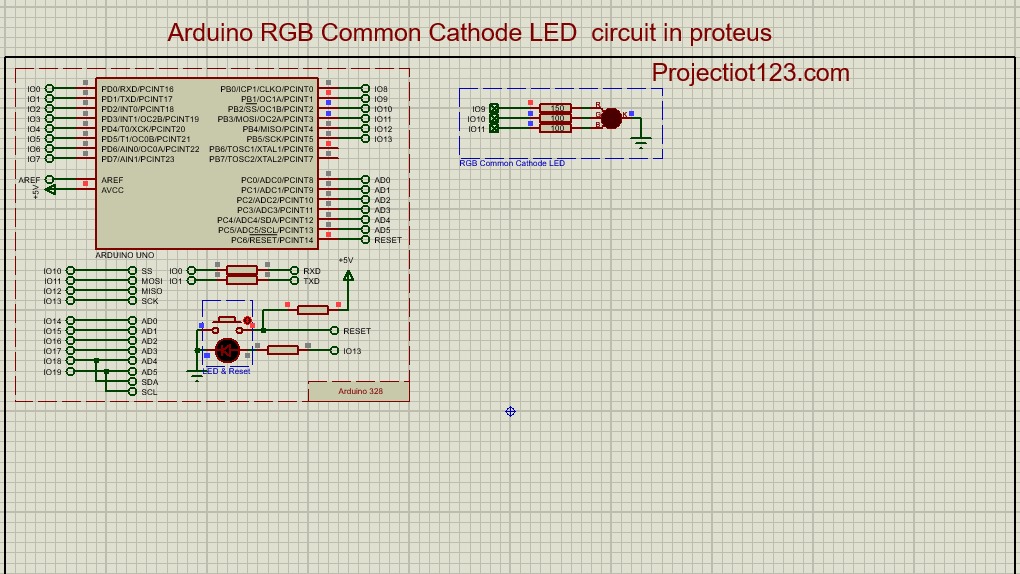Arduino RGB Common Cathode LED circuit in proteus

Arduino RGB Common Cathode LED circuit in proteus
In this article we will learn how to Interface Arduino RGB Common Cathode LED circuit in proteus.
In the last post we will learn how to Interface Arduino Piezo Sounder circuit in Proteus. You can visit our website,
I hope you appreciate my work, let’s discuss about today’s project.
Components:
- Arduino (328)
- Common cathode LED
- Resistors (150, 100, 1k)
- LED
- Push button
- Jumper wires
Construction…
- Connect K pin of Cathode LED with GND
- Connect R pin of Cathode LED with one side of resistor 150
- Connect 2nd side of resistor 150 with D9 pin of Arduino
- Connect G pin of Cathode LED with one side of resistor 100
- Connect 2nd side of resistor 100 with D10 pin of Arduino
- Connect pin B of Cathode LED with one side of resistor 100
- Connect 2nd side of resistor 100 with D11 pin of Arduino
- Connect VCC pin of Arduino with +5V
- Connect one side of resistor with +5V
- Connect 2nd side of resistor with one side of push button and then connect them with Reset
- Connect 2nd side of push button with –ve side of LED and then connect them with GND
- Connect +ve side of LED with one side of resistor
- Connect 2nd side of resistor with D13 pin of Arduino

Working…
An Arduino RGB Common Cathode LED circuit allows you to control a common cathode RGB LED using an Arduino microcontroller. RGB LEDs are capable of producing a wide range of colors by mixing red, green, and blue light. A common cathode RGB LED has one common cathode (negative) pin shared by all three color channels (red, green, and blue).
Applications…
- Mood Lighting
- Color Feedback Indicator
- Colorful Display
- Temperature Display
- Color Mixer
Advantages…
- Ease of Control
- Customization
- Low Cost
- Digital and Analog Control
- Educational Value

